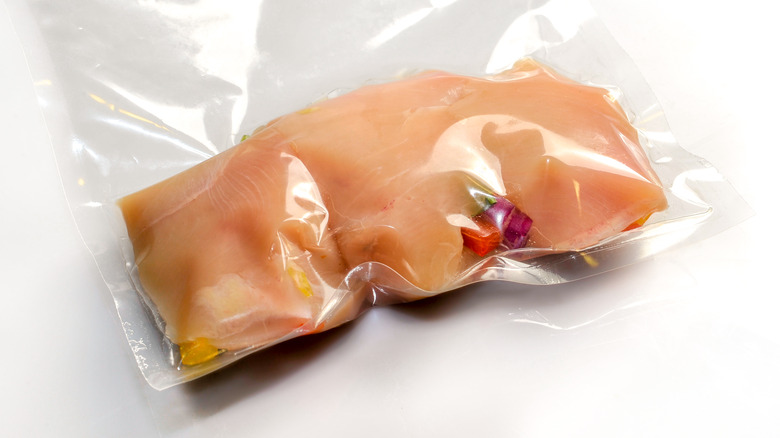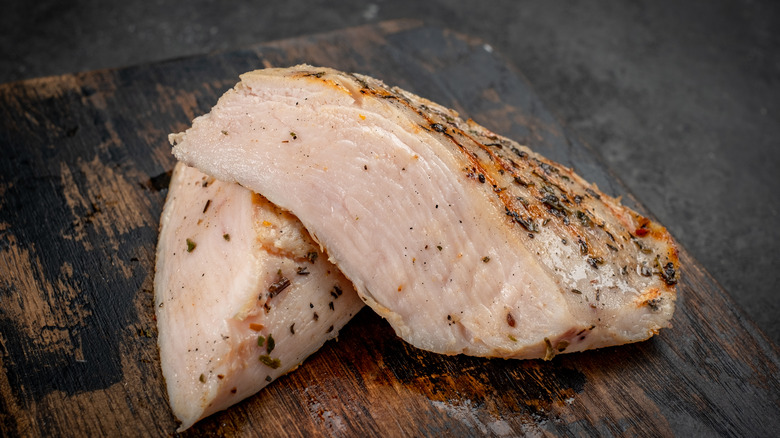Is It Safe To Sous Vide Chicken?
"Sous vide," which means "under vacuum" in French, is a cooking technique by which food is vacuum-sealed in plastic and then submerged in a water bath set to the precise temperature at which you want your finished product to be cooked to (via Anova Culinary). So, if your aim were to serve a rare steak, then after vacuum sealing your raw steak, you would immerse it in a water bath set to exactly 125 degrees Fahrenheit (the temperature at which a steak is considered to be cooked to "rare," according to Certified Angus Beef). If your aim is to serve that same steak medium well, then you would set the water bath to exactly 150 degrees Fahrenheit.
The purpose of the vacuum seal is to afford the closest possible contact with the food's surface without the food actually touching water directly. The purpose of the water bath is to afford precision. A water bath set to 125 degrees Fahrenheit will cook whatever is in it to precisely 125 degrees Fahrenheit, and not a degree more or less. The meat comes out without the benefit of the Maillard reaction – the browning that occurs when meats are sufficiently heated, says The Spruce Eats – you can produce that reaction after the water bath by using a blow-torch (via Sous Vide Guy) or by searing the meat for one minute per side on a cast iron skillet (via Anova Culinary).
All of this would seem to make perfect sense when it comes to steak, where precision is paramount. But is sous vide safe for chicken?
Regarding the safety of the sous vide method for chicken, there are two issues to consider
There are essentially two issues to address when it comes to the safety of cooking chicken via sous vide. The first is temperature. To prevent food-borne illness from chicken, the CDC recommends cooking chicken to an internal temperature of at least (via CDC). Cooking chicken using the sous vide method presupposes the chicken will be immersed in a water bath of at least 165 degrees Fahrenheit long enough for that heat to penetrate the center of the chicken – at least one hour, according to Anova Culinary, although here's the coolest part: You can keep the chicken immersed in its water bath for up to four hours before reducing the integrity of the chicken's texture.
The second issue has to do with the fact that while the chicken is cooking, it's constantly in contact with plastic — and very warm plastic, at that. Isn't that a food safety no-no? Well, actually, no, it's not — as long as you're using heat-safe plastic, according to Cook's Illustrated. "High-density polyethylene, low-density polyethylene, and polypropylene are considered the safest plastics" for cooking, which is what many available plastic bags are made of. As Cook's Illustrated points out, for example, SC Johnson makes its Ziploc brand bags with polyethylene and no other additives. If you're hesitant anyway, you can sous vide your chicken using a food-safe silicone bag or even a Mason jar.

